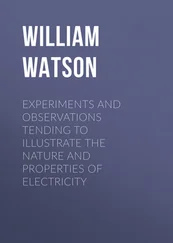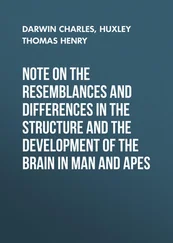Mark Changizi - Harnessed - How Language and Music Mimicked Nature and Transformed Ape to Man
Здесь есть возможность читать онлайн «Mark Changizi - Harnessed - How Language and Music Mimicked Nature and Transformed Ape to Man» весь текст электронной книги совершенно бесплатно (целиком полную версию без сокращений). В некоторых случаях можно слушать аудио, скачать через торрент в формате fb2 и присутствует краткое содержание. Год выпуска: 2011, Издательство: Perseus Books Group, Жанр: Старинная литература, на английском языке. Описание произведения, (предисловие) а так же отзывы посетителей доступны на портале библиотеки ЛибКат.
- Название:Harnessed: How Language and Music Mimicked Nature and Transformed Ape to Man
- Автор:
- Издательство:Perseus Books Group
- Жанр:
- Год:2011
- ISBN:нет данных
- Рейтинг книги:5 / 5. Голосов: 1
-
Избранное:Добавить в избранное
- Отзывы:
-
Ваша оценка:
- 100
- 1
- 2
- 3
- 4
- 5
Harnessed: How Language and Music Mimicked Nature and Transformed Ape to Man: краткое содержание, описание и аннотация
Предлагаем к чтению аннотацию, описание, краткое содержание или предисловие (зависит от того, что написал сам автор книги «Harnessed: How Language and Music Mimicked Nature and Transformed Ape to Man»). Если вы не нашли необходимую информацию о книге — напишите в комментариях, мы постараемся отыскать её.
Harnessed: How Language and Music Mimicked Nature and Transformed Ape to Man — читать онлайн бесплатно полную книгу (весь текст) целиком
Ниже представлен текст книги, разбитый по страницам. Система сохранения места последней прочитанной страницы, позволяет с удобством читать онлайн бесплатно книгу «Harnessed: How Language and Music Mimicked Nature and Transformed Ape to Man», без необходимости каждый раз заново искать на чём Вы остановились. Поставьте закладку, и сможете в любой момент перейти на страницу, на которой закончили чтение.
Интервал:
Закладка:
So one can see how sacrifices of nature-mimicry may sometimes be part of doing business. But why should the sacrifices be up near the top, where we have greater conscious access? The principal reason for this is that if the earlier regions of the hierarchy receive stimuli that they can’t make any sense of, then they will output garbage to the next higher level, and so all levels above the unhappy level will be unhappy. Breaking nature-mimicry at one level will break it at all higher levels
For example, I have argued in earlier research and in The Vision Revolution that writing looks like nature. In particular, I have suggested that written words look like visual objects. But words do not necessarily look natural at all levels up the hierarchy. Strokes look like contours, and letters look like object junctions; and thus the lower and middle levels of your visual hierarchy are happy. But because in alphabetic writing systems the letters in a word depend on how it is spoken, there is no effective way to make entire words look like objects. (For example, the junction-like letters in the words you are currently reading are simply placed side by side, which is not the way junctions in scenes are spatially related.) Your highest-level regions, of which you are most directly aware, only notice the nonnatural look of written words. And when visual signs do more closely match the visual structure of objects at the highest levels, people do see the resemblance to nature—this is why trademark logos and logographic writing systems like Chinese look (to your conscious self) much more object-like than the words you’re reading here.
My claim in this book that language and music mimic nature must be understood in this light. I claim that they mimic nature, indeed, but not necessarily “all the way up.” The reason why writing, speech, and music don’t obviously seem like nature is that nature is not being injected at the higher levels, perhaps—as we’ve seen with writing—in order to better accomplish the functions they are designed to carry out.
We see, then, why it is that the nature-mimicry in language and music has remained a secret for so many millennia. If only your lower-level visual and auditory areas could speak! They’d have long ago let you know that language and music are built like nature. Because those lower homunculi are part of you, there is a sense in which you have known about this ancient, deep secret code all along. Pieces of meat inside you knew the secret, but weren’t telling. In this light, one can view this book as a kind of psychoanalysis—if you’re into that—digging up the homunculus-knowledge you already have deep inside you, and working through the ways it shaped who you are today.
Nature’s Hard Core
“Language and music mimic nature.”
I will try to convince you of that over the course of this book. But we humans are very bad judges of whether a stimulus is natural or not, as we just finished discussing. How, then, are we to have any idea whether language and music do or do not mimic nature? And isn’t the phrase “mimicking nature” awfully imprecise?
Indeed, it is imprecise. Part of the book’s point is to make this more precise—to say specifically which aspects of nature are mimicked by language and music. But can this really be done? How can we possibly know the details of the natural world our ancestors experienced? It is, after all, that version of nature that our brains evolved to be good at processing, and that was a long time ago. In order to show that language and music mimic the primordial natural habitats that shaped our brains, it would seem that we have no choice but to start familiarizing ourselves with the sights and sounds of the savanna, and wherever else our ancestors hung out.
A field trip is in order. Like all natural habitats, savannas feature a hodgepodge of characters and settings, and we must take a visual and auditory inventory. We will need images from all over the savanna, including acacia trees, tall grass, sunsets, rocks, giraffes, lions’ manes, and termite mounds. And we will need to record the sounds within those habitats, including wind, rustling leaves, bird calls, insect buzzes, and rhino grunts. Once we have built an encyclopedia of how our ancestral world looked and sounded, we can then ask whether language and music mimic nature.
Hold it right there! Sorry, but I’m pulling your leg. That is definitely not what we’re going to do. Trekking across the Serengeti with a camera and tape recorder sounds grand, but it isn’t the route to a compelling scientific explanation. We want generalizations about what visual nature looked and sounded like for our ancestors, not merely an itemized list of all the furniture in the savanna. We need to grasp the fundamental “grammar” of nature. We need to pick apart nature, carve it at its joints, and elegantly summarize its structure. With such a “grammar” in hand, we will be able to make powerful predictions about what a nature-mimicker should be like . . . and thus, what language and music should be like.
Might there be fundamental regularities that cut across a wide swath of terrestrial habitats? Could it be that, although there are large salient differences across habitats, there are nevertheless deeper respects in which they are all similar? Although the savanna and any other specific habitats shaping our ancestors have hosts of peculiar features, might the sights and sounds of these habitats nevertheless have the same fundamental “core grammar”?
If there is a “core grammar” to nature, then this core would have been a highly steady invariant over our evolutionary history, and would thus have been a strong shaper of our visual and auditory systems. Sensory structure specific to the savanna or other particular habitats would, on the other hand, have been highly variable and intermittent over evolutionary time, and consequently less important for understanding what our visual and auditory systems became good at.
It’s this hard core of nature that we want. But is there one? Yes, indeed. There are solid core grammars underlying the structure of visual and auditory nature—there are “universals” in the structure of nature. That’s what I’ll endeavor to show you in this book; and then I’ll show you that language and music mimic these cores. I’ll give you a preview of these hard cores in the next section, when I introduce the central tenets of the theory—that is, when I first reveal the big secrets.
The Reveal
At this point, we have discussed the possibility that language’s and music’s mimicry of nature could be what enabled us humans to acquire language and music. We also took up why, if this were so, it would not be obvious to us. And in the section just above, I made myself clearer about the role that “nature” will play in understanding the origins of language and music: the goal is to find fundamental principles underlying the structure of nature (as opposed to a catalog of savanna paraphernalia), so that we’ll be in a strong position to ask whether these fundamental principles underlie language and music.
What I have not yet done is give you any specifics on what the hard cores in nature are that are being mimicked by language and music. That is, I haven’t revealed what any of the “ancient secrets” might actually be. Let’s rectify that, and simultaneously summarize the book’s two main theses, concerning speech and music.
Chapter 2 of the book is about the secret code underlying speech. Here’s the secret: human speech sounds like solid-object physical events . Notice that this secret makes no mention of rustling leaves or rhino grunts. Instead, the “nature” that speech mimics encompasses a very broad class of events, namely those among solid objects. The main observation is that events involving solid objects bumping and crashing about have a signature core auditory structure, and I will provide evidence that human speech has this signature structure. Speech can thereby get into our brains by harnessing auditory-recognition mechanisms we have long possessed for processing the “pinball” sounds of nature. This secret code gives us hominids the power to recognize speech without having speech-recognition mechanisms.
Читать дальшеИнтервал:
Закладка:
Похожие книги на «Harnessed: How Language and Music Mimicked Nature and Transformed Ape to Man»
Представляем Вашему вниманию похожие книги на «Harnessed: How Language and Music Mimicked Nature and Transformed Ape to Man» списком для выбора. Мы отобрали схожую по названию и смыслу литературу в надежде предоставить читателям больше вариантов отыскать новые, интересные, ещё непрочитанные произведения.
Обсуждение, отзывы о книге «Harnessed: How Language and Music Mimicked Nature and Transformed Ape to Man» и просто собственные мнения читателей. Оставьте ваши комментарии, напишите, что Вы думаете о произведении, его смысле или главных героях. Укажите что конкретно понравилось, а что нет, и почему Вы так считаете.












